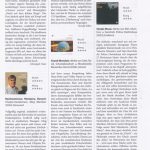GRAMOPHONE
June 1997
Pabst
Fantasie on “Mazeppa” (Tchaikovsky). Paraphrase on “Eugene Onegin” (Tchaikovsky).
Reminiscences of “The Demon” (Rubinstein). Paraphrase on “Sleeping Beauty” (Tchaikovsky).
Illustrations of “The Queen of Spades” (Tchaikovsky).
Tchaikovsky
(arr. Pabst) Cradle Song, Op. 16 No. 1.
Oleg Marshev (pf) / Danacord DACOCD450 / 68 DDD
Pavel Pabst (1854-97, his name is often anglicized to Paul Pabst) did not achieve the fame of his pianistic colleagues mainly because he chose to concentrate on teaching (his pupils included Lyapunov and Goldenweiser) rather than performing. He is known today chiefly through his Paraphrase on “Eugene Onegin”, and his other paraphrases remain largely unfamiliar. In adopting Liszt’s model Pabst inherited many of the essential ingredients, but his piano textures are generally more contrived and he is less inventive and original, although, like Thalberg, he knew how to decorate a good tune. This is musical confetti, and it relies heavily on the personality and charisma of the pianist for its success.
Fortunately Oleg Marshev is fully attuned to the task. He has all the technique required for the taxing pianistic acrobatics and he infuses the music with charm and character.
Immediately, in the Fantasie on Tchaikovsky’s opera Mazeppa, Marshev’s dexterity and flamboyance are allied to the warmth of his singing tone. He can sing and shape a melodic line beautifully, and this is essential for operatic paraphrases of this kind. The Eugene Onegin Paraphrase doesn’t have Cherkassky’s unique wealth of textural variety, but in places it has a greater fluency, a more natural sense of propulsion, and more depth of tone. The Reminiscences of “The Demon” is (at 17 minutes) too long to hold attention but the Paraphrase on “Sleeping Beauty” is one of Pabst’s more inventive works. Earl Wild has recorded it with consummate charm and grace, but Marshev fully matches his radiance and virtuosity. Tchaikovsky’s Cradle Song acts as a tender interlude before the imaginative and hugely virtuosic Illustrations of “The Queen of Spades” provides a thrilling finale to this richly enterprising recital.


